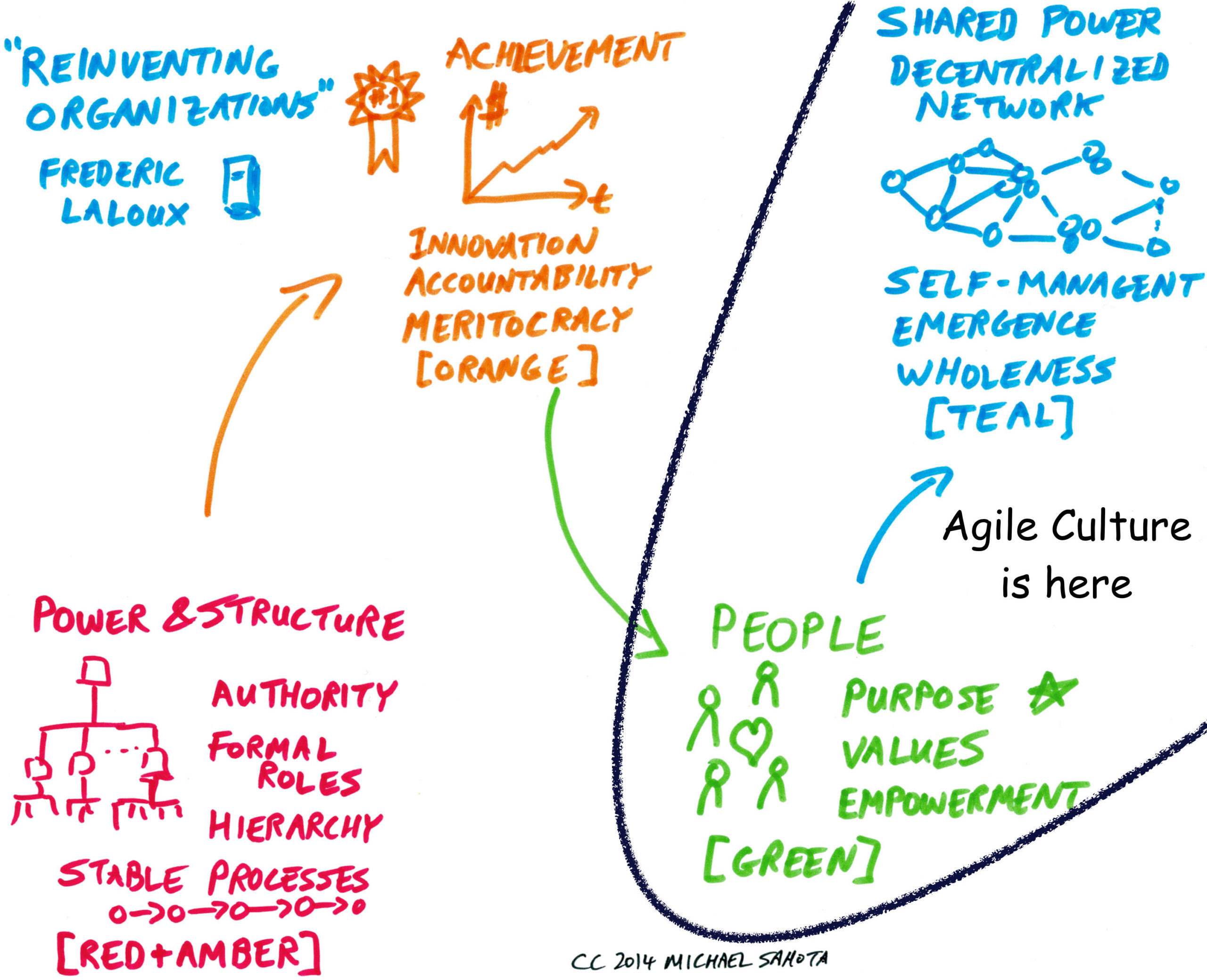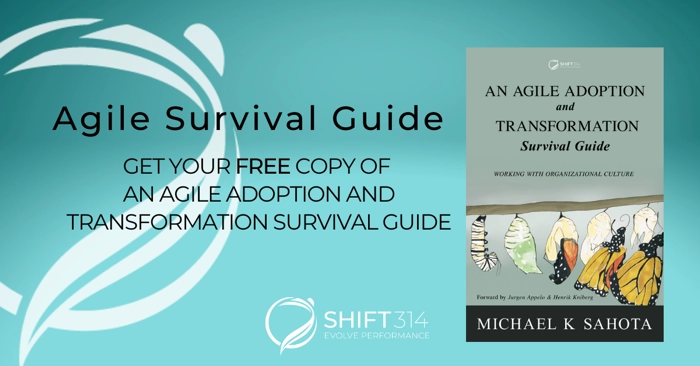Four years ago, I argued that Agile is a Culture System focussed on Collaboration and Cultivation. We may build on and refine this understand to see that Agile points towards a higher level of organizational consciousness and the benefits that come with it. In particular, Agile is about valuing people and setting them free to deliver.
The Agile Manifesto & Principles
Let’s use the Laloux Culture Model as a lens for understanding the Agile Manifesto. If you haven’t read about this yet, it is fantastic – go read it now – otherwise this post will not make much sense.
When we colour code each of the manifesto statements to match various stages of consciousness we get:
Individuals and interactions over processes and tools (Green)
Working software over comprehensive documentation (Orange)
Customer collaboration over contract negotiation (Green)
Responding to change over following a plan (Teal)
We see that the Agile manifesto is a mix of ideas from different levels.
Agile Principles
- Our highest priority is to satisfy the customer through early and continuous delivery of valuable software. (Green)
- Welcome changing requirements, even late in development. Agile processes harness change for the customer’s competitive advantage. (Teal)
- Deliver working software frequently, from a couple of weeks to a couple of months, with a preference to the shorter timescale. (Orange)
- Business people and developers must work together daily throughout the project. (Green)
- Build projects around motivated individuals. Give them the environment and support they need, and trust them to get the job done. (Green)
- The most efficient and effective method of conveying information to and within a development team is face-to-face conversation. (Green)
- Working software is the primary measure of progress. (Orange)
- Agile processes promote sustainable development. The sponsors, developers, and users should be able to maintain a constant pace indefinitely. (Teal)
- Continuous attention to technical excellence and good design enhances agility. (Teal)
- Simplicity–the art of maximizing the amount of work not done–is essential. (n/a)
- The best architectures, requirements, and designs emerge from self-organizing teams. (Teal)
- At regular intervals, the team reflects on how to become more effective, then tunes and adjusts its behavior accordingly. (Teal)
Note: Some principles are not colour coded since I didn’t really see how they fit. If you have ideas, please post a comment.
Agile is Teal/Green
When we tally up the results, we get the following for Agile Culture:
- 6 – Teal Stage – Self-management, Distributed power, and emergence.
- 6 – Green Stage – People: purpose, values and empowerment
- 3 – Orange Stage – Achievement
In a diagram, it looks like this:

The Agile Manifesto is pointing to a way of working that is at the Teal/Green stage. Elements of Scrum such as emergence and self-organizing teams are very closely connected with the Teal stage.
In summary, Agile Culture is about organizations operating at a higher level of consciousness with self-managing people.
Implications for Using Agile
For organizations at the orange stage (most large companies) Agile will be experienced as a disruptive force. As all the elements of culture need to shift together, Agile will by necessity be watered down or contained. This is what we typically see – Agile Adoption – with Enterprise Agile or Scaling Agile.
The main challenge for Agile Culture is that it is only a partial specification for operating at a Teal/Green stage. As can be see from Whole Agile, we need to consider other cultural and organizational elements for a holistic solution. We must look beyond Agile to allow Agile to succeed. This is the path of organizational transformation.



